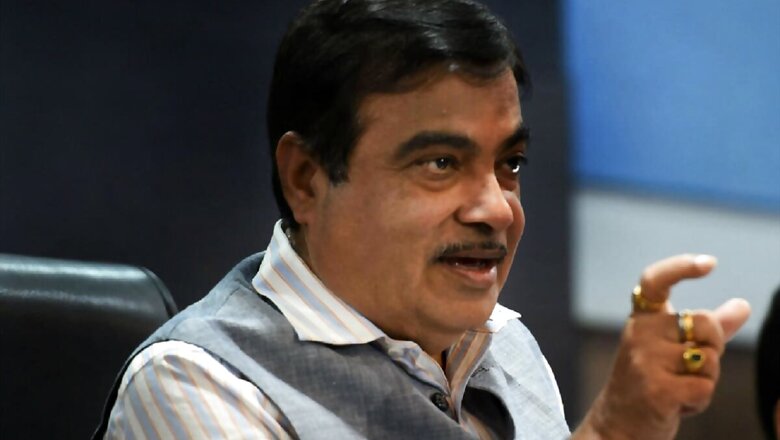
views
The 'Jal Kranti' initiative in Maharashtra that changed the face of drought-prone districts like Buldhana, if replicated across the country, can not only change farmers' fate but also strengthen the highways network, union Minister Nitin Gadkari said on Thursday. Government think-tank Niti Aayog will be framing guidelines in this regard, he added.
'Jal Kranti', a brainchild of the Road Transport, Highways and MSME Minister Gadkari, entails excavation or dredging of ponds in drought-prone areas to ensure rain water harvesting and recharge of ground water. The dredging is done by the highways ministry free of cost in lieu of sand, deposits and aggregates to be used for highways construction. "Buldhana pattern of Jal Kranti in several Maharashtra districts has resulted in prosperity in areas which were earlier known for maximum numbers of suicides.
"It has ensured adequate water availability for irrigation and drinking purposes and at the same time soil and sand has been made available to NHAI for highways construction. Niti Aayog, happy with the outcome, is planning to disseminate it in all states," Gadkari told PTI. This initiative can not only transform farmers' fate but also spur highways development, the minister added.
Areas like Buldhana barely receive 700 to 800 mm of rainfall, lesser than the entire Vidarbha region, which accounted for maximum of 2,239 suicides by farmers out of the 5,763 across the country in 2018. However, both villagers and NHAI officials say after adoption of the model, things have changed. As per the National Highways Authority of India (NHAI), work worth Rs 900 crore has been done there for water conservation.
Lauding Gadkari for the "path breaking work in integrating road construction with creation and deepening of waterbodies", Niti Aayog Vice Chairman Rajiv Kumar, in a letter to the minister, said: "Indeed, India is facing water crisis in its many river basins and such intervention which involves the participation of the local community can help us to create the sustainable environment for our coming generantions." Suggesting extension of the initiative to other government schemes such as Pradhan Mantri Gram Sadak Yojna, Pradhan Mantri Awas Yojna and MNREGA, Kumar said the Ministry of Rural Development should issue guidelines that wherever earthwork is required on priority, it must be taken from existing and proposed waterbodies.
Niti Aayog will also be working on framing the guidelines on such models and disseminate them to all states and concerned ministries for wider adoption, the letter added. To expedite highways construction in drought-prone areas, the Road Transport and Highways Ministry has already offered to construct waterbodies and ponds free of cost in states in lieu of soil excavated in the process.
The ministry earlier in a letter to states had urged them to join hands for the arrangement that can serve a two-fold purpose — providing water in drought-prone areas and procuring soil for highways building.




















Comments
0 comment